LG B4 OLED Smart TV – excellent picture for a lower price (AV review)

The LG B4 is its entry-level OLED, often overshadowed by the C4 and G4 OLED EVO TVs. Sure, it is not quite as bright, but it is pretty good on every count.
To segue: I was speaking to a major retailer salesperson (as a secret shopper) and wanted to know about 65” OLED. He extolled the virtues of the 65” C4 ($4299) and G4 ($6299), never mentioning the B4. When I said I only had around $3,000 to spend, he recommended a 75” LG QNED86.
I asked about other OLEDs and was told Sony made a Bravia 8 closer to $3800. I asked about the LG B4 OLED and got, “Oh yeah, I forgot – it is on sale too”.
Long story short, the salesperson said it was “The OLED you buy when you can’t afford the OLED you should buy.”
Let’s leave the segue behind because I think the salesperson is entirely wrong. It is the OLED you should buy unless you have a bright loungeroom and money is no object.
Why?
Sure, the C4 OLED is brighter using an OLED EVO panel, but for everyday use, the B4 OLED meets or exceeds SDR, HDR and Dolby Vision standards. Respected TV review site RTINGS gives it 8.9/10 compared to 9 for the C4 and comments, “No major differences between these TVs for mixed usage.”
The best description is it uses an older-tech LG OLED panel with components specified to meet a price point. For example (C4 in brackets):
- 20W 2.0 speakers, 8 channels downmix, e.g., 5.1.2 or 7.1 (40W 2.2 same)
- Pass-through Dolby Atmos (DA) to a DA soundbar for full decode (same)
- α8 AI Processor 4K Gen6 (α9 AI Processor 4K Gen7)
- α8 AI Super Upscaling 4K (α9 AI Super Upscaling 4K )
- Dynamic Tone Mapping (Dynamic Tone Mapping Pro)
- 120fps High frame rate (same)
- VRR 120Hz (144Hz with a PC/dedicated graphics card)
- 2 feet (Centre pedestal)
- HDR Brightness 2% window 685 nits with Dolby Vision and Atmos decode (950 nits, same)
- SDR Brightness 2% window 425 nits (427)
- DCI-P3 98.29 (98.07)
- Delta E accuracy 1.2 (.97)
- 4 x HDMI 2.1 (same), Wi-Fi 2.4.5Ghz (same)
In all picture areas, they both perform similarly and well.
Bottom line: It is the value OLED you buy unless you need the extra brightness of the C4 or G4 to counter large open-space loungerooms with lots of uncontrollable ambient light.

Australian Review: LG B4 OLED OLED65B4PSA (as at 16/10/24)
Note: All specifications refer to the 65” model.
| Website | Product Page Manual and User guide Online Manual (WebOS 24) We avoid repeating too much of the 163-page user guide. |
| RRP | 55/65 RRP $2499/3299. Current promotional price: $1999/2799. |
| From | LG Online, Harvey Norman, Domayne, JB Hi-Fi, Good Guys, Bing Lee, Appliances Online and many quality CE retailers |
| Warranty | 1-year ACL confers consumer rights against major defects for an extended period. |
| Made in | Indonesia |
| LG | LG (formerly Lucky-Goldstar from 1983 to 1995) is a South Korean multinational conglomerate that manufactures electronics, chemicals, and telecommunications products. |
| More | CyberShack LG News and reviews CyberShack AV news and reviews |
We use Fail (below expectations), Pass (meets expectations) and Exceed (surpasses expectations or is the class leader) against many of the items below. We occasionally give a Pass(able) rating that is not as good as it should be and a Pass ‘+’ rating to show it is good but does not quite make it to Exceed. You can click on most images for an enlargement.
We are also tightening up on grading. From now on, Pass, for example, means meeting expectations for the price bracket. We consider a Pass mark to be 70+/100, with extra points added for class-leading and excellence. For 2023 reviews and earlier, deduct 10 points from them for reasonable parity.
LG B4 First Impression – Hey, this is pretty good – Pass+
Apropos the salesperson’s lacklustre response, I was not expecting great things. Out of the box, it provided a bright, colour-accurate, almost perfect picture. I was pleasantly surprised.
The bezels are a little larger than the C4, the centre pedestal stand is missing (you can still fit most soundbars under the TV and between its legs), and the ports are in different places. Still, overall, it is undeniably a premium product from LG.
It comes with the usual non-backlit Bluetooth Magic Remote MR24, replete with an on-screen cursor. LG has resisted the trend of eliminating numeric buttons, which make free-to-air navigation much easier than wrestling with an EPG to find your channel.
The 65” is 1449 x 896 x 235mm x 17.3kg with the stand and can be safely 300 x 200 VESA mounted on a plasterboard wall.
I have not reviewed a B-series before, and it stands up pretty well to the LG C4 evo OLED – the Goldilocks OLED TV – just right. It gets my buy recommendation for TV rooms and viewing areas with reasonable ambient light control.
New for 2024 – LG Re:New webOS program – Exceed
You get four webOS upgrades over five years (five versions, including webOS 24), which is class-leading. In addition, LG will provide any necessary security patches as this is part of your home network.
LG webOS – the good and not-so-good
LG webOS is an excellent, easy-to-use TV operating system. The LG app store has over 2000 apps (Game 458, Entertainment 1305, Life 229, Education 56 and News/Info 73). It certainly has all Australian digital TV apps and streaming services. It appears to have more variety than Samsung, but Google TV is the app number winner.
The Not-so-good is that LG is moving to a ‘Smart Life Solution Company’. Instead of just selling you a smart TV, it has become a platform-based service business model that continuously generates profits from your viewing data—a.k.a. advertisements!
To use the TV’s essential smart functions, you must agree to sign into an LG Account and its Terms of Use and Privacy Policy. If you want to use more smart services, you must agree to a viewing information agreement, a voice information agreement, an Interest-based cross-device advertising agreement, and an LG Channels agreement.
LG allows you to reset the advertising ID, limit advertisement tracking, and delete viewing and voice information. However, that is a little late, as your data has already been collected.
Privacy Bottom Line
I have read all 20,000 words, and while I object to a TV/Brand knowing so much about my viewing habits and serving me advertisements, LG’s policies do not contain anything evil, and the Privacy and Terms of Use are benign enough.
When you buy a TV, you are not thinking about the 43-page and nearly 20,000-word agreement to use the fully use device fully. To be fair, Samsung has eight nested policies and over 35,000 words, so both companies are hoovering up your viewing data.
PS – this is in addition to any streaming app privacy policies.
Read Smart TVs sucking up your viewing data – and more
LG B4 OLED 2024 OLED65B4PSA base specs (65”)
- 55/65”
- α8 AI Processor 4K gen6
- OLED HDR10 panel (Dolby Vision decode)
- 100/120Hz native refresh (AU 50Hz power)
- 10-bit/1.07 billion colours
- Claim 100% DCI-P3
- Native Contrast: Infinite
- Delta E out of the box: 1.2 – excellent. It can be calibrated for a slight improvement.
- WebOS 24 – four webOS upgrades over five years
- LG Channels 300+ Free Advertising Supported TV (FAST) channels
- 4 x HDMI 2.1 4K@100/120Hz (eARC port 3), VRR/ALLM/HGIG/FreeSync/G-Sync
- Ethernet 10/100
- 2 x USB-A 2.0 5V/.5A/2.5W for flash drives and USB Camera compatible
- Optical out
- Wi-Fi 5 2.4/5GHz, BT 5.1 Tx/Rx (SBC/AAC/aptX) and supports AirPlay 2 and Chromecast
- 300 x 200 VESA wall mount.
- 20W 2 channel (2 x 10W down-firing speakers)
- Energy star: 5.5
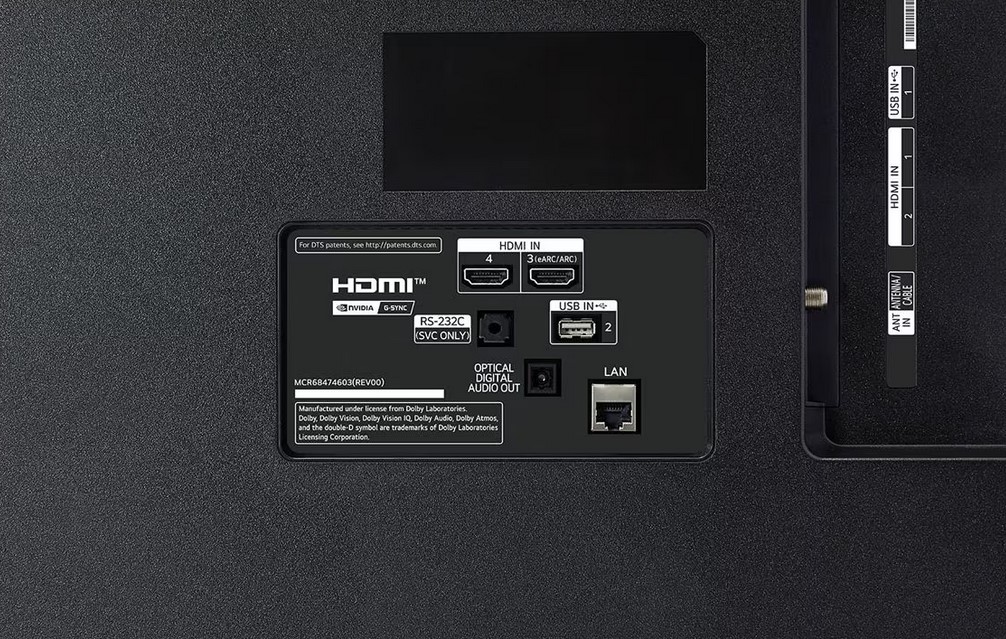
AI – functional – Pass
The α8 AI Processor 4K is the same as used in the QNED series and focuses on AI enhancement rather than the more comprehensive AI features on the more powerful C4. It has:
- AI Super Upscale
- AI Picture Pro (automatically selects the best resolution, brightness, etc)
- AI Brightness Control (changes brightness to match ambient light)
- AI Acoustic Tuning (Standard, Bass Boost and Treble Boost) in your viewing space setup.
It is missing some C4 AI like AI Concierge (content recommendations based on what you watch) and AI Genre Selection (changes settings to the type of content). Most will not notice this.
LG B4 Tests
Picture presets – Many – Pass+
It has ten modes, including a Personalised Picture Wizard to identify your preferences. This is in addition to the SDR formats Vivid, Standard, Eco, Cinema, Sports, Game, Cricket, Filmmaker, (ISF)Expert (Bright Room), and (ISF)Expert (Dark Room).
The HDR/Dolby Vision setting is automatic when it encounters a signal it can decode.
All these settings give you broad control over what you see. We found Vivid was too bright. Standard was best for Free-to-Air TV/digital streaming and Cinema for most movies in a well-controlled ambient light room.
You may not be able to see the differences between the settings below as you will likely view this on an 8-bit phone screen or desktop monitor. Look for details in the hair, green eye shadow, red lips and jewels. Also, look at the black background for subtle tone differences.









SDR – Exceed
Whether it was free-to-air TV or digital streaming, it aced every test. It is bright and colour-accurate. If you come from an LCD TV, you will be impressed by the amazingly rich, accurate colours and deep, inky blacks.
HDR (and Dolby Vision – DV) Brightness – Pass
Where the C4 can reach 950 nits for DV in a 2% window, the LG B4 reaches nearly 700 nits. Nit readings are for a 2% peak and 100% sustained window using Vivid mode with 100% brightness and brightness boost.
- Peak HDR:695/150
- Sustained HDR:690/150
- Peak SDR: 435/255
- Sustained SDR: 425/250
Contrary to popular belief that Dolby Vision needs 1000 nits or more, most DV movies show excellent HDR (details in light and dark areas) from around 500 nits. OLED pixel nits are brighter than LCD panel-wide nits. OLED can have infinite contrast (the difference between pure black and pure white) and LED/LCD can never reach more than about 5000:1, where pure blacks are more of a deeper grey.
This is why LG OLEDs have supported Dolby Vision since around 2017, and brighter (on paper) mini-LEDs have only reached this standard relatively recently.
Colour Gamut and accuracy – Exceed
Claim 100% DCI-P3 (test 99.5%). Delta E (colour accuracy) is excellent.
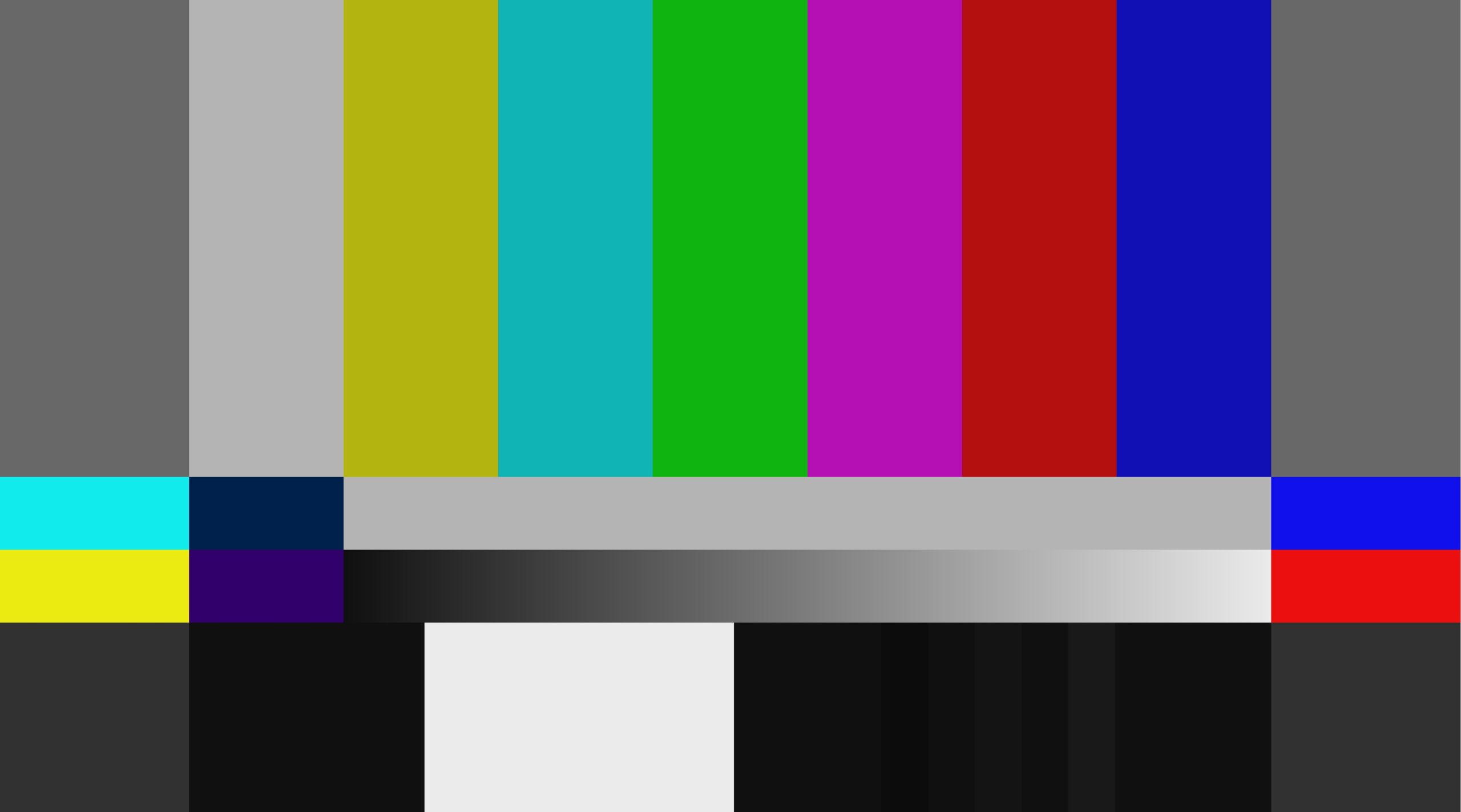


Contrast – Exceed
Infinite – this means true black and white. The tests below are nearly perfect (as expected of OLED).
You probably cannot see it on a smartphone or monitor, but the checker patterns. are in every box, indicating exceptional white and black levels.


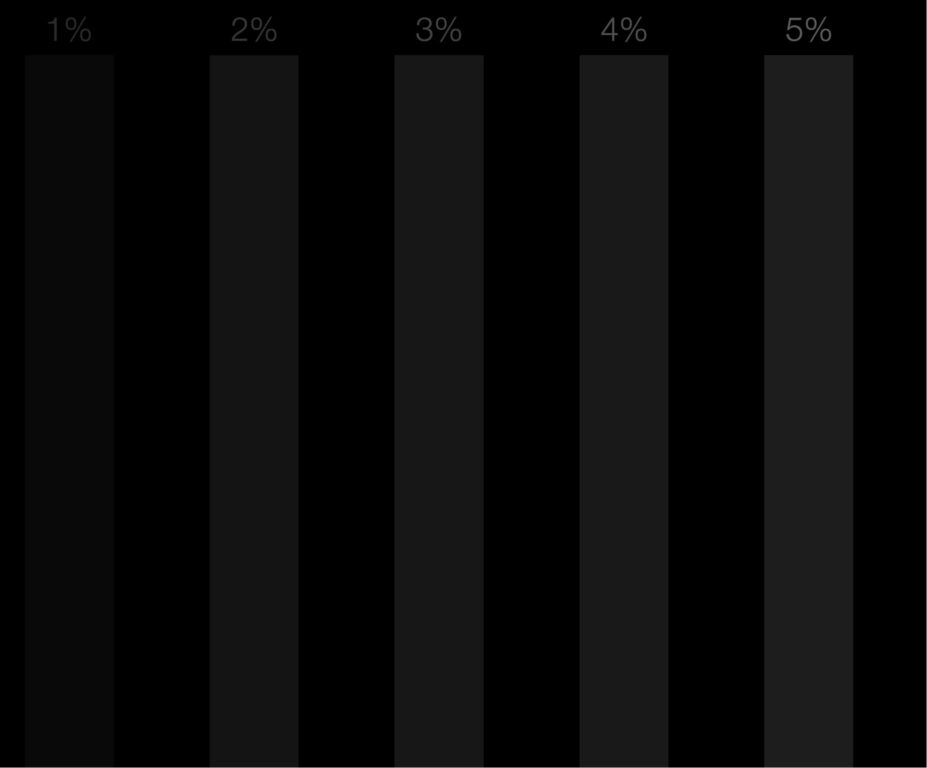


Uniformity – Exceed
Full-screen colours are the same intensity all over the screen.
Gradient – Pass+
For the most part, colour bands are smooth without banding. There is minor grey banding.
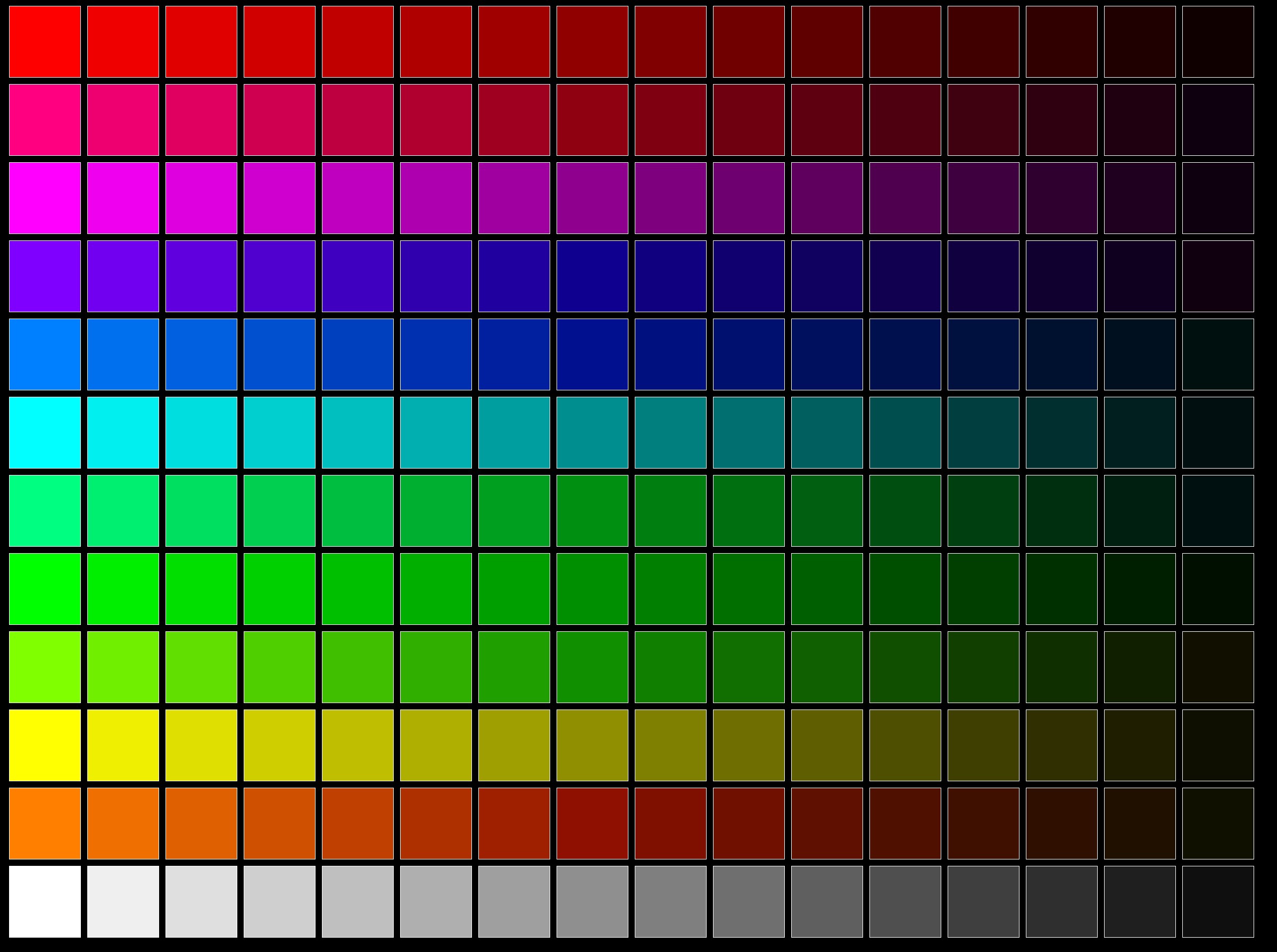
Blooming – Exceed
No blooming, but there is minor haloing with fast-moving lighter objects over a dark screen.
Sharpness – Exceed
You can read text down to 14-point.
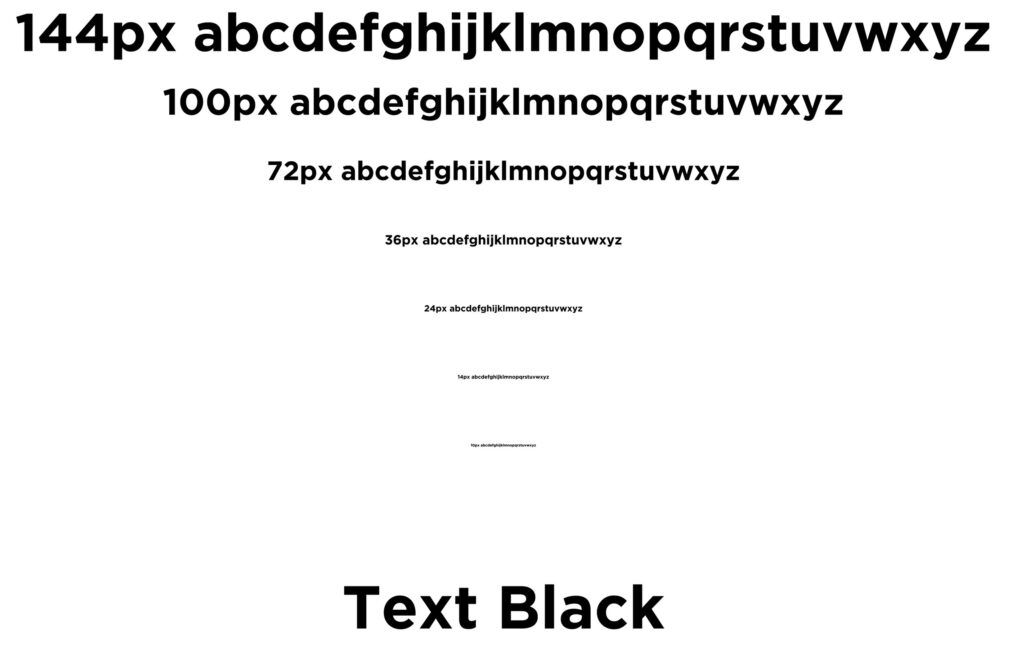
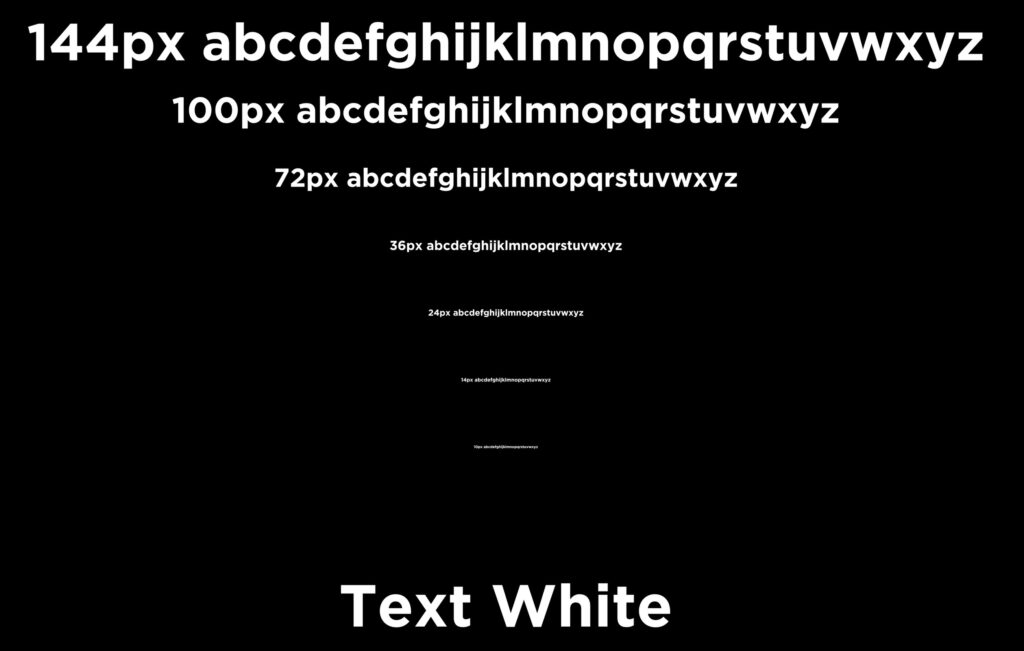
Motion smoothing – Exceed
You can enable Black Frame insertion (BFI), but the AI Picture Pro alone does a great job without it.
Stutter and Judder – Minor at 24fps – Pass+
In extreme tests, we found that some 24fps content had a slight stutter. BFI can induce Judder – leave it off.
DSE – Exceed
None – a uniformly pure white screen.
Reflectivity – Pass
It does a good job of reducing reflections. The C4 is marginally better, and the G4 is excellent. With any TV you need decent ambient light control and should avoid direct light from behind (as in this image)
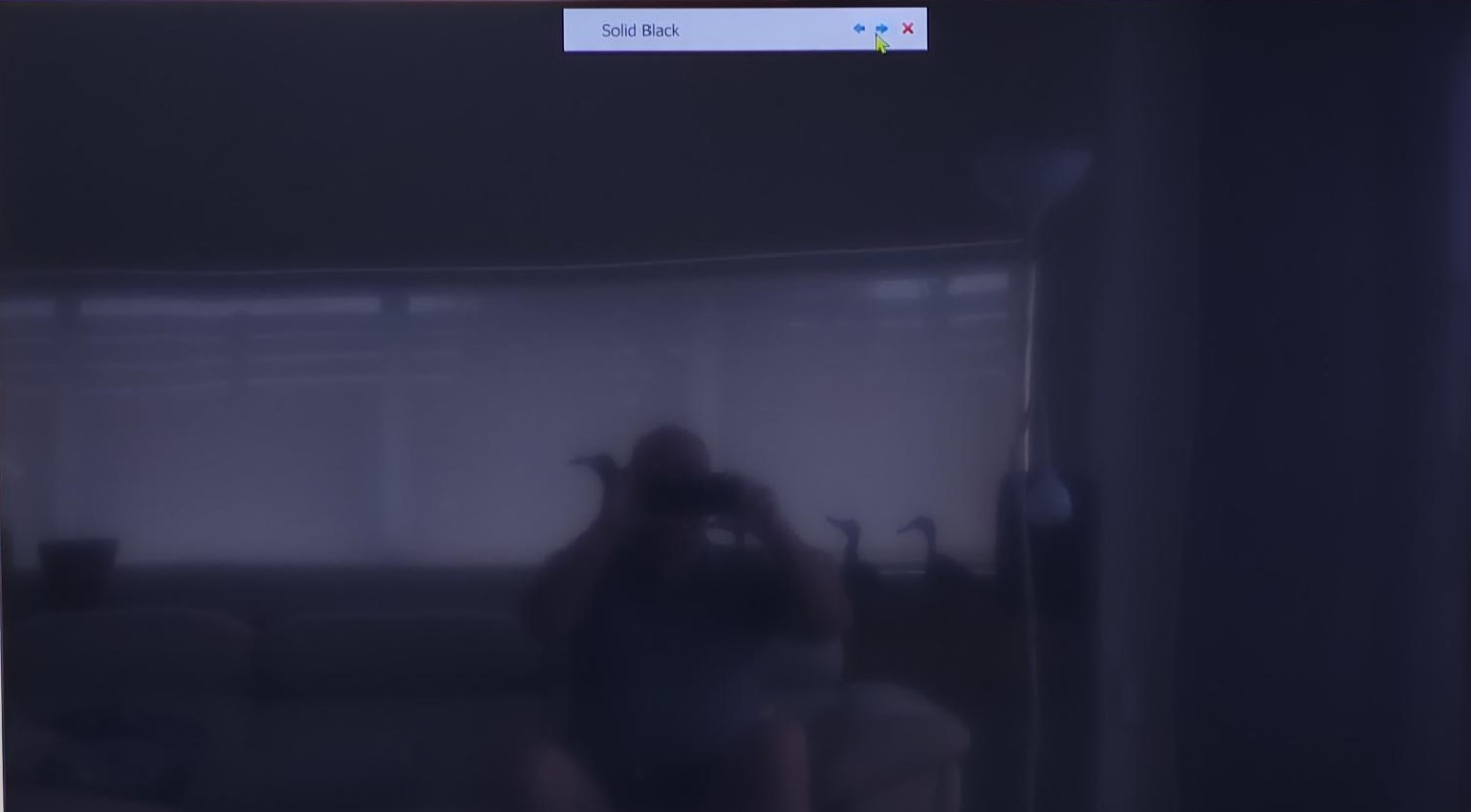
Viewing Angle – Pass+
There is no washout or colour change, and it can have seating positions nearly side-on.
Upscale – Pass+
See the results – one of the best we have seen but older 480p content may be soft.




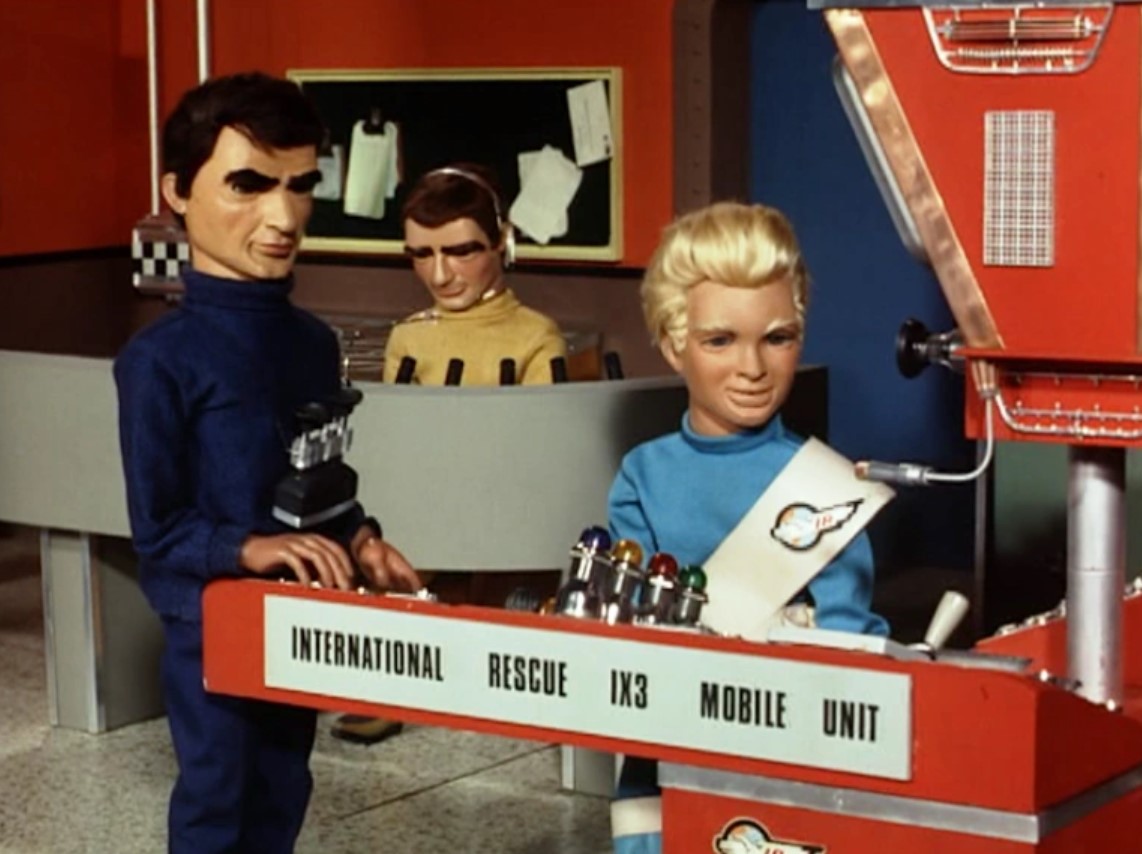

PWM – Exceed
It does not use Pulse Width modulation to control brightness.
Gamers (not tested)
Its <2ms response time and four x HDMI 2.1 ports make this an ideal gamer device.
Remember that AU power is 50Hz, so you get a 100Hz panel refresh (120Hz is for 60Hz).
We did not test a PC with a suitable iGPU; however, a Surface Pro 9 i7/Xe GPU connected with 10-bit/1.07 million HDR colours at HBM 3, 4K@100/120Hz. It also connected at 4:4:4 in Dolby Vision mode.
- NVIDIA GeForce Now cloud gaming.
- 21:9 (60Hz) or 32:9
- 3840 x 1600/1080 or 2560 x 1080.
- Dynamic Tone Mapping for HDR
- Game Sharpness
- Colour depth
- Black levels
Power levels – Exceed (65” tested)
- OLED panels use less power than energy-guzzling mini-LEDs. This has a 5.5-star rating (out of 6 stars).
- In SDR mode, it consumes <100W per hour. HDR/DV mode consumes between 100 and 200W per hour. Negligible.
How did it sound? Pass
- It has 20W 2. down-firing speakers – left and right. While the sound does a reasonable job of voice-tracking when used on a desktop, it loses that precision when wall-mounted.
- The maximum volume is 80dB, with noticeable distortion and frequency clipping. Sound quality is best described as hollow and tinny. Overall, back off to 75% volume, it becomes acceptable for clear voice and free-to-air TV.
- It has no low bass (20-50Hz); mid-bass starts from 60Hz, growing quickly to high bass at 100Hz. This is enough to hear some bass but not to feel it. The frequency graph below (gold line) shows it clips the frequencies and lowers the dynamic range. The treble is choppy and lacks the ‘airy feel as if you were there’.
This TV would benefit from adding any decent soundbar, and as it is Dolby Vision capable, why not splurge on the LG S95TR 9.1.5 Dolby Atmos 810W soundbar – a real spatial experience?
It is also WOW compatible with certain LG soundbars. This combines the TV speakers and soundbar. It does not add extra channels to the soundbar but can help smooth out the frequency curve.
Read
- How to buy a soundbar that meets your needs?
- Five tips for better TV sound – Dolby Atmos for beginners
LG B4 Sound signature: Bright vocal with a decent EQ

| Frequency | LG B4 OLED |
| Deep Bass 20-40Hz | It starts at 60Hz but is distorted. |
| Middle Bass 40-100Hz | Builds linearly to 100Hz, then flat |
| High Bass 100-200Hz | Flat |
| Low Mid 200-400Hz | Flat |
| Mid 400-1kHz | Flat |
| High Mid 1-2kHz | Flat with a slight decline and clipping of 1-4kHz |
| Low Treble 2-4kHz | Flattish with evident clipping. Most likely to help clear dialogue. |
| Mid Treble 4-6kHz | Flat |
| High Treble 6-10kHz | Flat |
| Dog Whistle 10-20kHz | Gentle linear decline to 20kHz |
| Volume | 80dB |
| Sound Signature type | It has a Bright Vocal sound signature (bass recessed, mid/treble boosted) that is good for vocal tracks and string instruments. Being flat from 100-200Hz high bass gives some semblance of bass—it is more of a whump than a thump. This signature allows presets and an EQ to recess frequencies (which you can’t add to a native signature) to focus on clear voice dialogue, night listening, music, and more. |
| Soundstage stereo | It is just a little wider than the TV. |
| Soundstage Dolby Atmos/DTS:X | It decodes up to eight channels (5.1.2 or 7.1) of Dolby Atmos and DTS:X metadata and downmixes them to the 2.0 speakers. The sound stage is slightly wider than the TV, and the 3D height is very forward-centric. |
| Comment | Adequate for FTA TV and digital streaming. Not for movies, music or Dolby Atrmos. |
| BT (headphones) | The BT SBC or AAC codec is typical and crushes the mid-bass and high treble. There is decent Left/Right separation. It is supposed to support aptX, but we cannot test for that. |
| Read | How to tell if you have good music (sound signature is the key – guide). |
CyberShack’s view – The LG B4 is not the OLED you buy when you can’t afford the OLED you should buy.
I must admit that I took umbrage with the salesperson’s quote, inferring that the B4 was a second-class citizen. Well, they have sales quotas to fill and want to extract the maximum number of dollars from your wallet.
My comprehensive review proves that it is every bit an LG OLED-quality device. In most respects, it is the OLED you buy when you tire of oversaturated mini-LED, LED/LCD blooming, and all the other problems LCD technology suffers from.
It is the TV you buy when you want a better, more natural colour, Dolby Vision-capable TV than LED TVs can provide.
Competition
If Dolby Vision is a criterion (and it should be for the masses of DV/DA movies now available on streaming services), then Samsung is left out, as none of its TVs supports DV frame-by-frame decode and playback is in the inferior HDR10 movie-by-movie mode.
Sony Bravia 8 is OLED but more expensive. Its primary benefit is the Google TV operating system.
LG B4 ratings
Note: Ratings now use 70/100 as a pass mark. 2023 and earlier used 80/100, so you can deduct 10 points from these for parity.
- Features: 80 – It has all the necessary hardware and more AI smarts than competitors.
- Value: 85— If you get it on sale, the value is 90.
- Performance: 80 – you will not be disappointed.
- Ease of Use: 80 – LG WebOS 24 is easy to use with all major streaming Apps and now has a RE:New policy. Its warranty is 12 months, and Australian Consumer Law should protect you for a few years. However, the 20K-word terms and conditions are a real stretch when Google TV is about 4000.
- Design: 75 – Black glass slab, good centre pedestal and decent remote.
LG B4 OLED OLED65B4PSA
55/65 RRP $2499/3299. Current promotional price: $1999/2799.Pros
- Almost the same performance as an LG C4 – slightly less bright
- Out-of-the-box calibration is excellent
- True OLED colours and inky blacks with decent Dolby Vision output
- Low power use
Cons
- TV sound is good but not really for Dolby Atmos or surround sound – you need a soundbar
- 1-year ACL warranty is too short
- More data gathering, but its policies are benign











